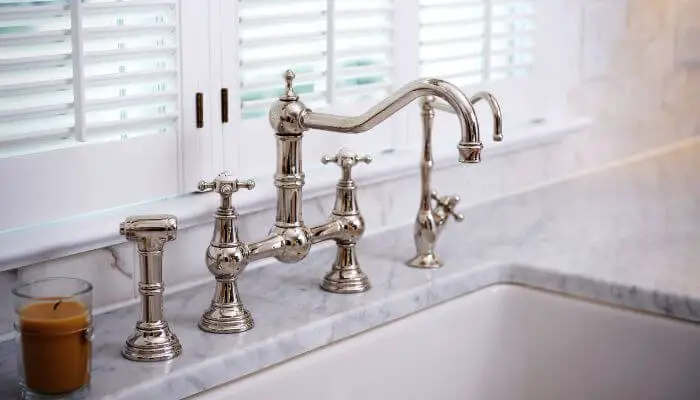If you accidentally dropped fruit in the sink, would you just wash and eat it? But what if I tell you that your kitchen sink might be more contaminated than your toilet seat?

Don’t think there’s something wrong with your eyes when you read that last line because it’s true. Professor Charles P. Gerba from the University of Arizona found more fecal bacteria in kitchen sinks than in a flushed toilet seat.
Even if your sink looks clean, it might be full of germs and bacteria when wet. Therefore, you need to keep it dry.
Do you want to know how to keep kitchen sink area dry? Be sure to continue reading this post.
Ways to Keep the Kitchen Sink Area Dry:
Keeping the sink dry can prevent it from becoming a breeding ground for germs and bacteria. Here are some of the methods you can use:
1. Use a Dish Towel to Wipe Away Excess Moisture After Each Use
Scrubbing the kitchen sink isn’t enough to clean it. Moisture can attract bacteria and germs, so drying the sink is integral to the process.
While you can use paper towels to dry the kitchen sink, they may leave residue for you to clean. Therefore, a dish towel would be a better choice. It’s not only fast-absorbent and durable but also soft and can polish the sink without leaving streaks and scratches on the surface.
Dish towels are made of the following materials:
- Terry cloth
- Linen
- Cotton
2. Use a Dish Drying Mat
Dish racks may offer more space for draining your dishes, but they can’t keep water away from your kitchen sink and counter. A dish drying mat can absorb moisture, so in a way, it’s better.
You can try placing a dish drying mat under your rack. It drains your dishes while keeping the area dry.
Not all types of dish mats are absorbent, though. So don’t choose something made of rubber or silicon. Get one made of microfiber or cloth instead.
3. Don’t Use any More Water Than You Need
We learned to conserve water as a way of preserving our planet. But we can add another specific reason – protecting the kitchen sink from contaminants. Using more water means your sink is always wet and welcoming to germs and bacteria that may cause diseases.
You can utilize water containers to guarantee you use just the right amount. For example, instead of rinsing vegetables and dishes in running water, you can submerge them in a bowl or basin.
4. Don’t Turn The Tap on Full Power
When using the sink in a hurry, we tend to turn the faucet in full force. It may lead to water splashing around the kitchen sink area. Most of the time, this is our unconscious behavior.
So, to keep your kitchen sink dry, you must make a conscious effort. Remind yourself that you’re not a firefighter trying to put a fire out.
You can put a reminder on the wall so you won’t forget to adjust the pressure every time you turn on the tap. Also, avoid shaking your wet hands and keep a kitchen towel reachable.
5. Use a Faucet Aerator
Aerators don’t only act as water filters, but they also regulate the amount of water coming out of the tap. They help prevent or minimize splashing. Check if your fixture already has an aerator. It’s a small screen at the tip of your faucet.
Depending on your faucet’s design, you may be able to install an aerator or upgrade it. If you already have one, clean the faucet aerator to ensure it will work properly.
6. Use Liquid Handwash
You’re retaining moisture in the sink by keeping a soap bar in that area. However, a bottle of handwash is easier to clean and won’t leave water on the surface.
So, if you still use a soap bar to wash your hands, consider switching to liquid soap to keep your kitchen sink dry.
Conclusion
Learning how to keep the kitchen sink area dry is essential. It can prevent harmful microorganisms from spreading in your home.
Water might aid bacterial growth, so ensure that your kitchen sink area is moist-free. Follow these methods for your family’s safety.
